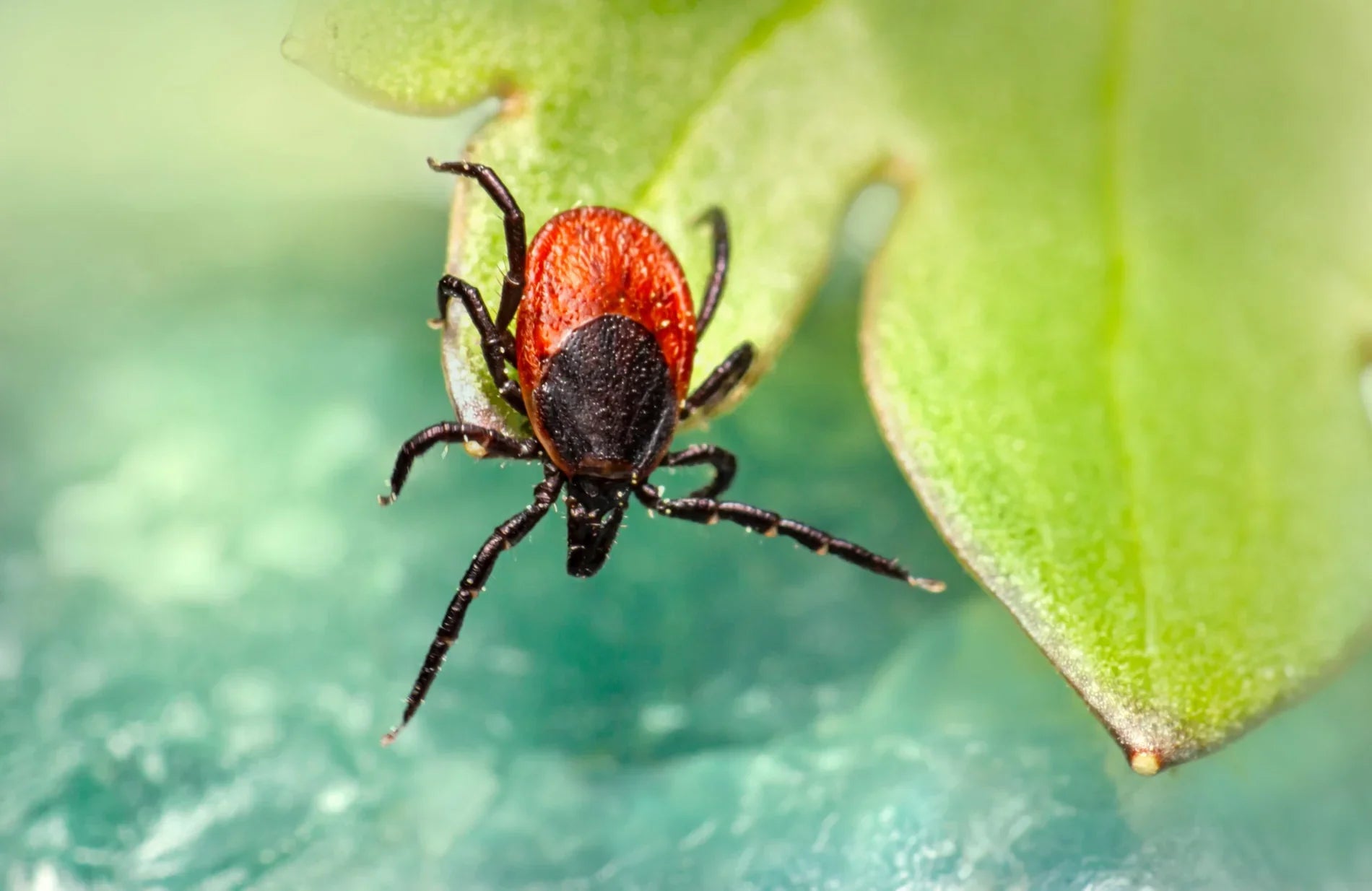A new diagnosis has been confusing doctors and scaring patients. The symptoms are all over the place, so diagnosing is difficult. Finally, there’s no treatment, and you’ve never heard of it. It’s called Alpha-gal Syndrome.
In this article, we’re going to explain:
- What is Alpha-gal syndrome?
- Identifying and diagnosing Alpha-gal syndrome
- Alpha-gal reactions and cofactors
- Management and treatment of Alpha-gal syndrome
- A Betr way to manage Alpha-gal syndrome
Keep reading for tips on avoiding, identifying, and living with Alpha-gal Syndrome.
What is alpha-gal syndrome?
Alpha-gal syndrome(AGS) is an allergy to the specific sugar molecule galactose-ɑ-1,3-galactose, commonly called alpha-gal. This sugar is found in all mammals except humans, apes, and Old-World Monkeys. We’re exposed by eating meats like beef, lamb, or pork.
AGS symptoms are highly variable, making it difficult for doctors to diagnose. A single individual with AGS can experience different symptoms or severity of symptoms depending on the trigger and other individual differences.
The reactions range from life-threatening anaphylaxis to skin irritation, digestive problems, and more. Some immediate responses, but nighttime reactions are common for 2-10 hours after ingesting a trigger food.
Researchers have linked the spread of AGS to tick-bites. The main culprit, the Lone-Star Tick (Amblyomma americanum), has historically lived in the southeast United States, up the East Coast, and into the Midwest. But, due to warming temperatures and expanding home ranges, the diagnosis of all tick-borne illnesses is rising.
The Lone-Star tick isn’t the only tick that causes AGS. Different species worldwide contribute to AGS spread, and diagnoses have occurred on every continent except Antarctica.
This makes education, awareness, and prevention incredibly important.
Takeaway
Alpha-gal syndrome is spread by tick bites and is a reaction to a specific sugar. Because of the variety of symptoms, it’s difficult for doctors to treat and diagnose
Identifying and Diagnosing Alpha-Gal Syndrome
The major complicating factor of AGS is how different it can look between individuals and even how much reactions vary in the same person at different times. The unpredictability of the symptoms is one of the main tools doctors use to identify AGS.
Common symptoms of AGS include nighttime itching and redness of the skin, stomach upset, swelling of the face and hands, or anaphylaxis. The less severe reactions are often “delayed onset,” meaning they don’t occur immediately.
Reactions to red meat, especially in someone who’s always tolerated red meat, and a recent tick bite (or probability of one) are essential clues in diagnosing AGS. Often, these indicators are only present in ideal circumstances.
Because of the delayed and variable nature of reactions, it’s difficult for patients or doctors to link them to a specific trigger, like red meat. Tick bites, too, often go undetected or forgotten, especially for people who spend a lot of time outdoors.
Ultimately, AGS requires a blood test to confirm a diagnosis. If your blood contains the antibody(the immune cell that identifies an allergy trigger) for alpha-gal, and you are experiencing symptoms, you have AGS.
Takeaway
Alpha-Gal syndrome is definitively diagnosed by testing a person’s blood for the alpha-gal antibody. Possible signs or symptoms include a new reaction to red meat, a recent tick bit, nausea, nighttime skin itching or redness, and, most seriously, anaphylaxis.
Alpha-Gal Reactions and Cofactors
There are many different reactions that an individual can have to alpha-gal. The most common reactions are skin redness, itching, and digestive disturbance. Joint pain, respiratory symptoms, or cardiac symptoms are also possible.
Unfortunately, anaphylaxis, a life-threatening swelling of the face and throat, is relatively common. A 2008 study observed that AGS was the most commonly identified cause of anaphylactic reactions.
Sometimes, these reactions, even serious ones, can occur hours after eating the trigger food. On the other end of the spectrum, some patients have experienced immediate, severe reactions from airborne allergens like the fumes of grilled meats. Researchers also note significant differences in the amount of exposure that initiates a response.
Another curveball of AGS is that individuals may experience a total absence or difference in the severity of reactions based on specific cofactors. The most common cofactors known to affect AGS reactions are alcohol consumption and exercise, but other known cofactors include:
- Medications (specifically steroids or anti-inflammatory drugs)
- Stress
- Lack of sleep
- Menstruation
- Other illness
Considering all these issues, it’s no wonder that Alpha-Gal Syndrome remains challenging to recognize and diagnose.
Takeaway
There are many different trigger foods, individual variations, timing, and severity of reactions, which make AGS challenging to diagnose and treat.
Management and treatment of Alpha-gal syndrome
At this time, no medication can “cure” AGS. However, some patients appear to have fewer and less severe reactions over time, but we don’t know why or how this happens. And remission isn’t guaranteed.
Ideally, focusing on prevention is the best way to avoid contracting AGS. Because we know where AGS comes from, we know that there are definite steps that you can take to prevent exposure: specifically avoiding tick bites.
Luckily, there’s plenty of guidance available on avoiding tick bites. Knowing where ticks live, preparing for tick encounters, and discouraging tick bites are the main steps to prevention.
Know where ticks live
- Ticks live in heavily wooded areas, in grasses, and on shrubs
- Ticks are just as likely to be found in your yard as in the deep woods
- Pet owners should regularly check and/or medicate pets to minimize the potential of them bringing ticks into the house
- If you’re spending time outdoors, avoid tall grass and undergrowth and walk in the center of trails
Discouraging encounters
- Use a quality insect repellent targeted at ticks
- Treat clothes with insect repellent
- Wear light-colored clothing with long sleeves and long pants
Check for Ticks
- Check your clothes, pets, and gear for ticks when you return from an outing.
- Shower as soon as possible after being outdoors
- Check your body thoroughly for ticks (tough to reach and hidden areas)
If you do get bit by a tick, don’t panic! You can remove a tick yourself. Follow the CDC instructions, being careful to remove the entire tick and not squeeze its body.
After removing the tick, watch for new symptoms, particularly rash and fever. If you experience anything out of the ordinary, call your doctor and be ready to give them as much information as possible.
Management
There isn’t a cure or treatment for AGS. The best way to manage the condition is to identify and avoid reaction triggers.
The bad news is that it’s more complicated than avoiding mammal meats.
Unfortunately, animal products containing alpha-gal are EVERYWHERE. Many items you wouldn’t think of being a trigger could cause AGS reactions.
General categories of triggers include:
- Mammalian meats such as beef, goat, lamb
- Including organ meats, bone marrow, gravy, and collagen.
- Natural casing sausages
- Even poultry sausages often have pork or beef casings
- Gelatin and products that contain gelatin
- Milk, cheese, and dairy products
- Certain medications, vaccines, and medical devices
- Personal care items like perfumes, lotions, deodorants, and toothpaste
- Liquid soaps, detergents, fabric softeners, dryer sheets, and toilet paper
- Carrageenan, a common additive to thousands of products, can also be an alpha-gal trigger.
For an exhaustive list of potential triggers, we recommend going to alphagalinformation.org.
Because of the potential for anaphylaxis, it’s essential to have emergency medication available to you. Generally, an allergy specialist can prescribe this, and they can run tests to help you identify likely trigger foods.
Takeaway
There is no known cure for Alpha-gal syndrome, so prevention and management are critical. Prevention strategies rely on avoiding exposure through tick bites. Management requires being aware of triggers and preparing for more severe reactions.
A Betr way to manage Alpha-gal syndrome
After reading the list of potential AGS trigger foods, you might be feeling overwhelmed. How are you supposed to link a wide range of seemingly unconnected symptoms to triggers in your daily life?
Allergy tests can help, but they don’t always paint a complete picture, especially if you’re dealing with unusual reactions or symptoms.
The best way to identify trigger foods or substances is through an elimination and reintroduction diet. First, remove all potential exposure to reaction-causing substances, then slowly reintroduce them. As you add a possible trigger food back, it’s necessary to monitor for reactions or symptoms carefully.
Sound overwhelming? Understandably, but Betr can help!
The Betr protocol is a three-step process that starts with healing your body through gut-healthy, anti-inflammatory, unique foods. We combine years of experience with the science of gut health to heal the body, eliminate ongoing inflammation, and find the foods that are best for YOU!
Our program takes the intimidating prospect of an elimination/reintroduction diet and makes it fun and delicious! Level 1 focuses on healing your body. We use super-nutritious foods to restore beneficial gut bacteria. We also pair you with a coach to support you as you reach your goals.
After a month of Level 1, you’re ready for Level 2. You start slowly reintroducing foods into your diet and watching for the return of symptoms.
This protocol is ideal for those newly diagnosed with Alpha-gal syndrome. It isn’t a cure, but our protocol is a struggle-free way to restore your health!
Members diagnosed with an autoimmune disorder, Lyme Disease, and other rare and complicated issues have had great success with Betr. Our approach also has excellent success with digestive and even skin disorders!
Betr works by getting your body out of “fight or flight” mode, which comes from constant stress and inflammation. When the body is rested, it can accurately identify threats and respond less dramatically to sensitivities and allergens.
We’ve seen members heal from chronic pain, stress, autoimmune disease, chronic IBS, and more!
If you’re looking for a healthy way to manage AGS, we think you deserve Betr!
Takeaway
The Betr approach to healing is perfect for managing AGS. Overcoming inflammation, identifying trigger foods, and restoring the body to its natural, healthy state can minimize the impact of AGS on your life!
The Wrap-up
Hopefully, we’ve provided some insight and awareness into this new diagnosis. This has been a quick review, but a couple of takeaways include:
- Alpha-gal syndrome is spread by tick bites and is a reaction to a specific sugar. Because of the variety of symptoms, it’s difficult for doctors to treat and diagnose
- Alpha-Gal syndrome is definitively diagnosed by testing a person’s blood for the alpha-gal antibody. Possible signs or symptoms include a new reaction to red meat, a recent tick bit, nausea, nighttime skin itching or redness, and, most seriously, anaphylaxis.
- Many different trigger foods, individual variations, timing, and reaction severity make AGS challenging to diagnose and treat.
- There is no known cure for Alpha-gal syndrome, so prevention and management are critical. Prevention strategies rely on avoiding exposure through tick bites. Management requires being aware of triggers and preparing for more severe reactions.
- The Betr approach to healing is perfect for managing AGS. Overcoming inflammation, identifying trigger foods, and restoring the body to its natural, healthy state can minimize the impact of AGS on your life!
If you want more information about Alpha-gal syndrome, we recommend alphagalinformation.org for a comprehensive review of the emerging science of this new disease.
If you have AGS, an autoimmune disease, or are looking to use food as medicine to heal your body, visit betrhealth.com to learn more about our struggle-free path to wellness!
Want to learn more about food sensitivities and their impact on health?






